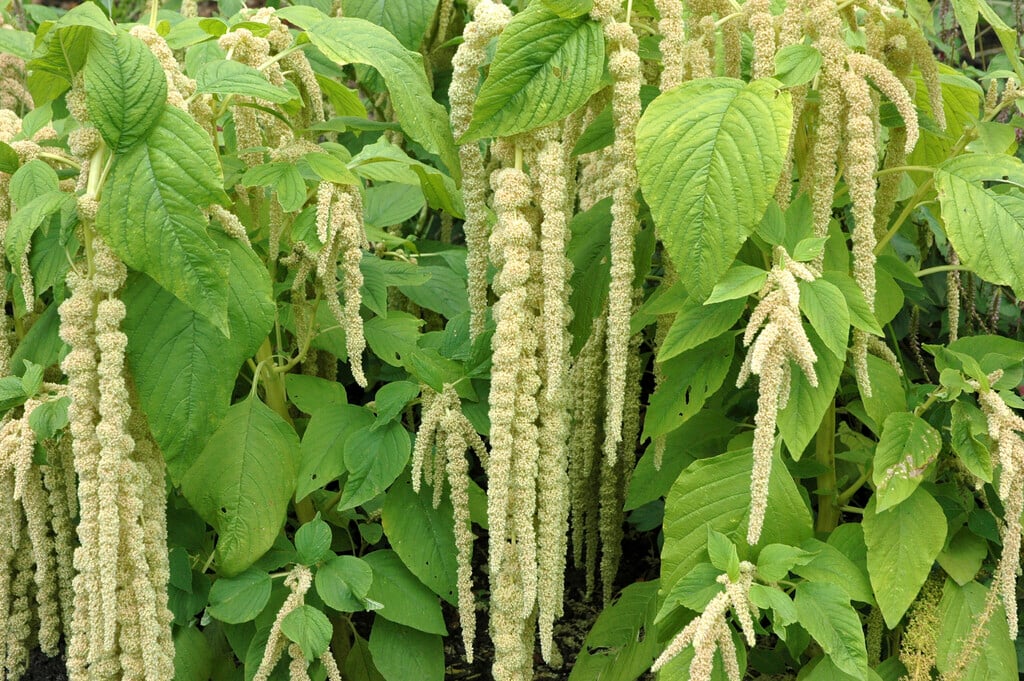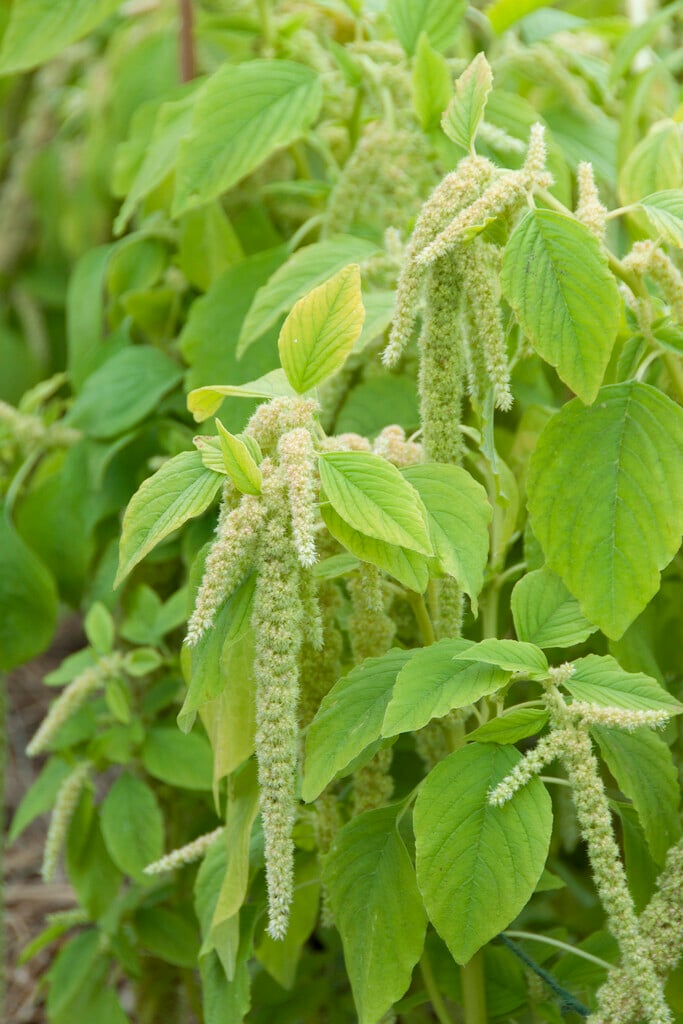Amaranthus caudatus 'Viridis'
A bushy annual, with large ovate leaves and drooping, light to lime green tassel-like racemes of tiny flowers in summer and autumn. The seedsheads provide food for birds. Large enough to make an architectural feature, the flowers can be used for fresh or dried arrangements
Size
Ultimate height
1–1.5 metresTime to ultimate height
1 yearUltimate spread
0.5–1 metresGrowing conditions
Moisture
Moist but well–drained, Well–drainedpH
Acid, Alkaline, NeutralColour & scent
| Stem | Flower | Foliage | Fruit | |
| Spring | Green | |||
|---|---|---|---|---|
| Summer | Green | Green | ||
| Autumn | Green | Green | ||
| Winter |
Position
- Full sun
Aspect
South–facing or West–facing
Exposure
ShelteredDrought resistance
Yes Hardiness
H2Botanical details
- Family
- Amaranthaceae
- Native to GB / Ireland
- No
- Foliage
- Deciduous
- Habit
- Bushy
- Genus
Amaranthus can be upright or spreading annuals or short-lived perennials, with simple leaves and tiny flowers borne in dense, erect or pendulous, catkin-like inflorescences in summer and autumn
- Name status
Accepted
How to grow
Cultivation
Seeds can be sown direct or started in pots or trays indoors. Pinch out the centre stem to encourage side branching. Grow in moist, fertile, humus-rich soil in full sun, in a sheltered site. Will tolerate poor soil, but then requires watering freely during dry periods in summer
Propagation
Propagate by seed
Suggested planting locations and garden types
- Prairie planting
- Wildlife gardens
- Cottage and informal garden
- Architectural
- Cut flowers
- Flower borders and beds
Pruning
Cut back after flowering
Pests
May be susceptible to aphids
Diseases
May be susceptible to a virus
Get involved
The Royal Horticultural Society is the UK’s leading gardening charity. We aim to enrich everyone’s life through plants, and make the UK a greener and more beautiful place.

